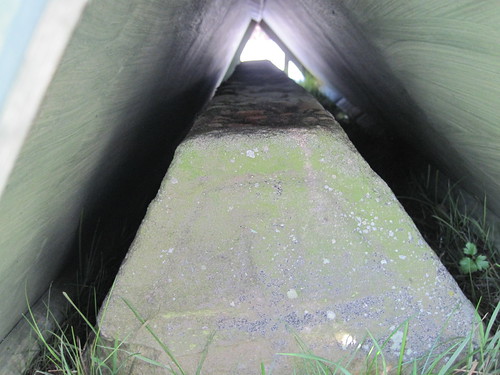The parish of Marton also includes the hamlets of Tolesby and Newham. The original village was in two parts – an eastside and a westside. Most of the eastside of the village was removed when Marton Lodge was improved by Bartholomew Rudd and this allegedly included the cottage where James Cook was born. There are no original buildings left in the hamlets of Tolesby and Newham, all the land being built on with modern housing.
In the west side of the village is the parish church of St Cuthbert. It originally consisted of a nave, chancel and square tower. Many of the improvements and it’s design you see today was through the patronage of the Rudd family.

In the older picture can be seen the window given by the Bolckow family. By the condition of the stone work, this picture was taken not long after the window was installed.
As well as Bolckow and Vaughan, other notable graves are:
Bartholomew Rudd.
Born 1769 Died 1829. Owned the estate of Marton, lived at Marton Lodge with his wife Ann and are both buried in the family vault in St Cuthberts . ( Marton Lodge burnt down and was eventually replaced by Marton Hall built by H.W.F Bolckow )
John Bartholomew Rudd.Born 1813 Died 1888. Lived at Tollesby Hall. Nephew of Bartholomew Rudd of Marton Lodge. He gave the stone from Marton Lodge to be used in the building of the Capt Cook Memorial School.
Sir Raylton Dixon.
Shipbuilder. Bought Gunnergate Hall but died before moving in. Councilor from 1868 – 1874 and 1879 – 1888. Mayor of Middlesbrough in 1889 when the town played host to the Prince and Princess of Wales at the opening of the new Town Hall.

Edward Williams. 1826 – 1886
In 1865 Edward Williams moved to Middlesbrough to become the general manager of Bolckow and Vaughan’s iron works. After several years as a manager he bought his own works, so becoming an Ironmaster in his own right.
Robert Ridley Kitching.
An Architect by profession. He was a Middlesbrough Councilor from 1932 – 1949 and Mayor in 1943 and 1944.
Henry Newbould 1877 – 1965.
Pie maker. Second son of the founder of the well known family business in Middlesbrough, Henry took over the running of the business after Wilson Newbould ( his brother ) died on 15th May 1896 at the young age of 57, and Wilson’s oldest son, Samuel aged 19, had died of pneumonia two days earlier.
Joseph Winterschladen.
Born in Cologne in 1842. He came to Middlesbrough in 1865 setting up as a wine importer. In 1885 opened up his own business as Winterschladens. Married Miss M. J. Barrett in 1875, they had four sons and four daughters. Lived at Rhine Lodge which is still standing, on Marton Road next to what is now Longlands roundabouts.
Agnes Spencer.
Died 1959. Born in the village of Marton . She stayed on at the memorial school as a pupil teacher. Moving to Leeds, she met and married Thomas Spencer the cofounder and partner of Marks and Spencer. She funded many charitable works including the church of St Agnes at Easterside . In later life she came back to Marton, and lived on the Grove.

The Stewart Park and Marton History Group was a small local history group that now, no longer meets . It had a website that was in the process of being updated with local history when the group disbanded and these are the pages that survived.
The lasting legacy of the group is the graves of Bolckow and Vaughan in Marton Churchyard, a project the group started and fund raised for and it eventually came to be, through the work of Middlesbrough Environment City.



 Show on map
Show on map

















